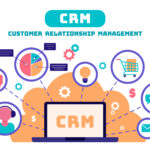Lead generation tools and Customer Relationship Management (CRM) systems are both essential components of a modern sales and marketing strategy. When used independently, each can help improve business processes. However, the true potential of these tools is realized when they are integrated. CRM integration with lead generation tools enhances lead management, boosts sales efficiency, and improves customer experiences by automating the flow of data from lead acquisition to customer conversion. In this article, we will delve into how lead generation tools integrate with CRM systems, the benefits of this integration, and the best practices for leveraging both to drive business growth.
Table of Contents
-
What is Lead Generation?
-
What is a CRM System?
-
The Importance of Integrating Lead Generation Tools with CRM
-
Types of Lead Generation Tools
-
How Do Lead Generation Tools Integrate with CRM Systems?
-
Benefits of CRM and Lead Generation Integration
-
Popular CRM Systems and Their Lead Generation Integrations
-
Key Features to Look for in Integrated Systems
-
Best Practices for CRM and Lead Generation Integration
-
Common Challenges in Integration and How to Overcome Them
-
Conclusion
1. What is Lead Generation?
Lead generation is the process of attracting and capturing the interest of potential customers for your business’s products or services. This can be achieved through various marketing channels, such as content marketing, social media, email campaigns, webinars, and paid advertising. The goal is to create a list of qualified leads that can be nurtured and converted into loyal customers.
Lead generation tools help automate the process of identifying, capturing, and qualifying leads. These tools collect data on potential customers, including contact details, interests, browsing behavior, and more. By streamlining and automating this process, lead generation tools reduce the workload on marketing teams, allowing them to focus on other critical tasks, like content creation and strategy.
2. What is a CRM System?
A Customer Relationship Management (CRM) system is a tool that businesses use to manage all their relationships and interactions with customers and prospects. CRM systems centralize customer data and interactions, providing businesses with a 360-degree view of their customers and prospects.
These systems store information like:
-
Contact details
-
Interaction history
-
Purchase history
-
Customer preferences
-
Lead status
A CRM system helps sales and marketing teams track and manage leads, prospects, and customers throughout the customer journey. By consolidating all this information in one place, CRMs allow businesses to nurture leads, close deals, and provide exceptional post-sale service, ensuring customer satisfaction and retention.
3. The Importance of Integrating Lead Generation Tools with CRM
Integrating lead generation tools with CRM systems offers a seamless workflow between marketing and sales teams. It connects the processes of capturing leads and managing customer relationships, ensuring that businesses can:
-
Automate Lead Capture: Leads generated from different sources, such as websites, social media, or email campaigns, are automatically entered into the CRM. This eliminates the need for manual data entry and ensures leads are captured in real time.
-
Improve Lead Qualification: Once leads are captured, the CRM can help segment and score them based on engagement and behavior. This allows sales teams to focus on the most qualified leads, improving conversion rates.
-
Streamline Communication: Sales teams can see all communication with a lead, ensuring that follow-ups are timely and relevant. This avoids confusion and ensures a personalized approach.
-
Boost Productivity: Integrating lead generation tools with CRM reduces time spent on repetitive tasks, such as data entry and lead tracking. This allows teams to focus on higher-value activities, such as closing deals.
4. Types of Lead Generation Tools
There are various types of lead generation tools, each designed to capture different types of leads. Some popular types include:
1. Landing Page Builders
These tools allow businesses to create dedicated landing pages that capture lead information, typically through forms offering something of value (e.g., an eBook, webinar access, or a discount). Popular landing page builders include Unbounce, Instapage, and Leadpages.
2. Form Builders
Form builders simplify the process of capturing lead information directly from your website. These tools allow businesses to create custom forms for various purposes, such as newsletter sign-ups, contact forms, or free trial registrations. Examples include Typeform and Google Forms.
3. Social Media Lead Generation Tools
These tools capture leads directly from social media platforms like Facebook, LinkedIn, and Twitter. By running targeted ads, you can gather leads directly through the social network. Tools like LinkedIn Lead Gen Forms and Facebook Lead Ads are examples of this.
4. Email Marketing Tools
Email marketing tools like Mailchimp and ActiveCampaign help generate leads by automating email campaigns and collecting leads from sign-up forms, newsletters, and promotional emails.
5. Webinar and Event Platforms
Hosting online events or webinars is a great way to capture leads. Platforms like Zoom and GoToWebinar allow businesses to collect information from attendees before and after the event.
5. How Do Lead Generation Tools Integrate with CRM Systems?
The integration between lead generation tools and CRM systems typically occurs through APIs (Application Programming Interfaces) or third-party integration platforms. Here’s how it works:
1. Real-Time Data Syncing
Lead generation tools automatically sync lead information with the CRM, ensuring that data is up-to-date and accurate. For example, when a lead fills out a form on a website, their contact details and other relevant information are automatically transferred to the CRM, where they are stored and segmented.
2. Lead Scoring and Qualification
Once a lead is entered into the CRM, the system can automatically score and qualify them based on predefined criteria, such as industry, company size, or level of engagement. This information can then be passed back to the lead generation tool to help refine future marketing campaigns.
3. Automated Follow-Ups
After a lead is captured, the CRM system can trigger automated workflows, sending follow-up emails or notifications to sales teams, ensuring no lead is forgotten or neglected.
4. Unified Dashboard
When lead generation tools are integrated with CRM, sales and marketing teams can access a unified dashboard that displays all lead data in one place. This includes lead sources, engagement history, scoring, and current status in the sales funnel.
5. Marketing Automation
Many CRMs include marketing automation features, allowing them to work in tandem with lead generation tools. For example, CRM systems can send automated email campaigns to leads, nurturing them until they are ready to convert into customers.
6. Benefits of CRM and Lead Generation Integration
Here are the key benefits of integrating lead generation tools with CRM systems:
1. Streamlined Lead Management
By integrating lead generation with CRM, businesses can easily track leads from the moment they are captured to when they convert into customers. This leads to better organization, less confusion, and a smoother sales process.
2. Increased Sales Productivity
The integration reduces manual work, allowing sales teams to spend more time engaging with qualified leads rather than entering data. Automation features like lead nurturing campaigns and follow-up reminders save time and increase efficiency.
3. Improved Lead Scoring and Qualification
When CRM systems are integrated with lead generation tools, businesses can take advantage of advanced lead scoring based on a range of factors, such as engagement, location, industry, or behavior. This allows sales teams to prioritize high-value leads and convert them more effectively.
4. Better Marketing and Sales Collaboration
Integration ensures that marketing and sales teams are aligned in their efforts. Marketing can pass qualified leads to sales, while sales can provide feedback on the quality of leads, helping marketing teams improve their future campaigns.
5. Enhanced Customer Experience
With a CRM integrated with lead generation tools, businesses can create more personalized interactions with prospects. Since all the lead data is stored in the CRM, sales teams have access to detailed information that helps them address specific customer pain points.
7. Popular CRM Systems and Their Lead Generation Integrations
Several CRM platforms support integration with lead generation tools. Here are some of the most popular ones:
1. Salesforce
Salesforce is a leading CRM that integrates with various lead generation tools like HubSpot, Marketo, and LinkedIn Lead Gen Forms. Salesforce allows businesses to capture, score, and nurture leads efficiently.
2. HubSpot
HubSpot offers its own lead generation tools, such as landing page builders, forms, and email marketing automation. It also integrates with external tools like Zapier, LinkedIn, and Unbounce to capture and manage leads effectively.
3. Zoho CRM
Zoho CRM integrates seamlessly with lead generation tools like Formstack, LeadSquared, and Google Ads, allowing businesses to capture and convert leads through a unified platform.
4. Pipedrive
Pipedrive allows businesses to capture leads through integration with tools like Typeform, Mailchimp, and Leadfeeder, helping them automate lead collection and nurturing.
8. Key Features to Look for in Integrated Systems
When choosing a CRM and lead generation tool integration, look for the following features:
-
Real-time data syncing: Ensure that lead data is automatically transferred to the CRM without delays.
-
Lead scoring capabilities: Choose a system that allows for the automatic scoring and prioritization of leads.
-
Automated workflows: Select a CRM that can automate follow-ups, lead nurturing, and communication processes.
-
Customization options: Ensure that both the CRM and lead generation tools allow for customization to fit your business needs.
-
Analytics and reporting: The system should provide insights into lead performance, conversion rates, and campaign effectiveness.
9. Best Practices for CRM and Lead Generation Integration
To get the most out of your CRM and lead generation integration, follow these best practices:
-
Ensure proper data hygiene: Regularly clean and update lead data to maintain its accuracy and relevance.
-
Train teams on using the integrated system: Both sales and marketing teams should understand how the integration works and how to leverage it effectively.
-
Align marketing and sales goals: Ensure both teams are working towards the same objectives, and communicate frequently to optimize lead management strategies.
-
Monitor and optimize performance: Regularly evaluate the performance of the integration and make adjustments as needed.
10. Common Challenges in Integration and How to Overcome Them
While integrating lead generation tools with CRM systems can provide significant benefits, there are some challenges to consider:
1. Data Inconsistency
Data from different lead generation sources may not always be consistent, leading to issues with accuracy. To overcome this, implement data cleansing tools and protocols.
2. Complexity in Setup
Integrating multiple tools can be complex and time-consuming. Work with experts or consult vendors to ensure smooth implementation.
3. User Adoption
Teams may resist using a new system. To address this, provide thorough training and support.
11. Conclusion
Integrating lead generation tools with CRM systems is crucial for businesses looking to enhance their lead management, improve sales productivity, and offer a more personalized customer experience. By automating lead capture, qualification, nurturing, and follow-up processes, businesses can ensure that no lead is left behind and increase their chances of converting prospects into loyal customers.
With the right tools and strategies in place, CRM and lead generation integration can significantly streamline operations, boost sales performance, and contribute to long-term business growth.














